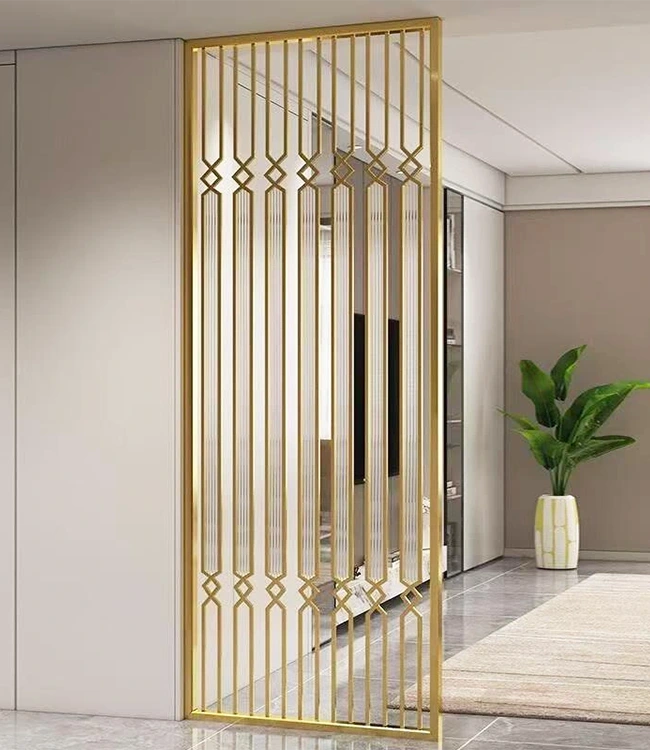How Do Partition Screens Enhance Interior Design?
2024-10-12
Partition screens are versatile design elements that can significantly enhance interior spaces. Here’s how they contribute to improving aesthetics, functionality, and atmosphere in various environments:
1. Space Definition and Segmentation
- Creating Zones: Partition screens help define different areas within open spaces, such as separating living rooms from dining areas in homes or delineating workstations in offices. This segmentation creates a sense of order and organization.
- Flexible Layouts: They enable easy reconfiguration of spaces without the need for permanent walls, allowing for adaptable layouts that can change based on needs.
2. Aesthetic Appeal
- Design Variety: Available in various materials, colors, patterns, and styles, partition screens can complement or contrast existing decor, adding visual interest and texture to a room.
- Artistic Expression: Decorative screens can serve as standalone art pieces, showcasing intricate designs, natural materials, or bold colors that enhance the overall design theme.

3. Light Control and Privacy
- Diffusing Light: Screens can filter natural light, creating softer, more inviting lighting conditions while still maintaining an open feel. This is particularly beneficial in spaces with large windows.
- Enhancing Privacy: In both residential and commercial settings, partition screens provide a degree of privacy, allowing individuals to feel more comfortable without completely isolating themselves from the surrounding environment.
4. Acoustic Benefits
- Sound Absorption: Certain partition screens are designed with sound-absorbing materials, helping to reduce noise levels in busy environments. This is especially useful in open office layouts, cafes, or community spaces where maintaining a quieter atmosphere is desirable.
5. Enhancing Functionality
- Storage Solutions: Some partition screens incorporate shelving or cabinets, providing functional storage while simultaneously serving as a divider. This is ideal for maximizing space efficiency in smaller areas.
- Visual Communication: In office settings, partition screens can be used to display information, such as whiteboards or bulletin boards, facilitating collaboration and communication among team members.
6. Indoor-Outdoor Connection
- Bringing Nature Indoors: Some partition screens are made from natural materials or feature designs that mimic outdoor elements, creating a connection to nature and enhancing the overall ambiance of a space.
- Biophilic Design: Incorporating living plants within or around partition screens promotes a sense of well-being and tranquility, contributing to a healthier indoor environment.
7. Flexibility and Mobility
- Portable Solutions: Many partition screens are lightweight and portable, allowing for easy movement and rearrangement as needed. This adaptability is beneficial in multi-functional spaces where different configurations may be required for various activities.
Conclusion
Partition screens are an effective tool in interior design, offering a blend of aesthetics, functionality, and adaptability. They help create defined spaces, enhance privacy, control light and sound, and add artistic flair, making them a valuable addition to both residential and commercial environments. By thoughtfully integrating partition screens, designers can transform spaces into more organized, inviting, and functional areas that cater to the needs of their users.


